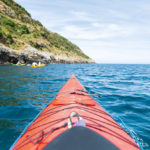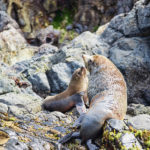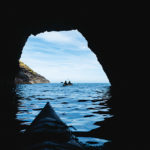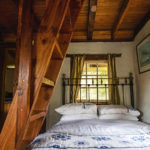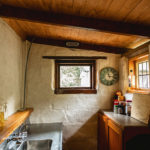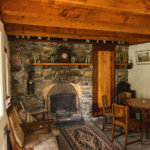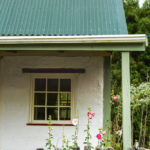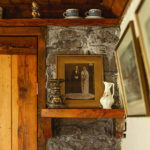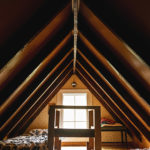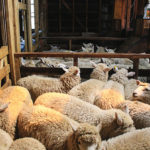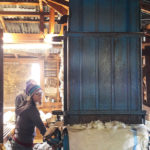Shireen and Francis Helps have spent four decades protecting their little blue penguin neighbours on the Banks Peninsula Track
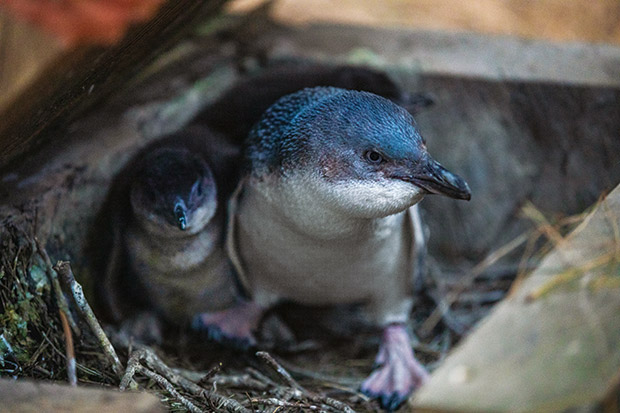
The kororā goes by several names; little penguin, little blue penguin and, in the case of Flea Bay, the white-flippered penguin.
Tourists and trampers help a hardworking Banks Peninsula family in their four-decade struggle to rescue penguins, save the native forest and secure their livelihood.
Words: Sue Hoffart Photos: Kirsten Sheppard
Originally published in the March/April 2020 issue of NZ Life & Leisure.
Sometimes, in moments of exasperation, Shireen Helps wonders why she tolerates the mayhem penguins inflict on her life. White blotches stain her garden path and the pungent odour of penguin poo wafts throughout her yard.
Shireen and husband Francis have placed handmade boxes around their 140-year-old Banks Peninsula home in an attempt to stop the birds burrowing under the house. A vain attempt, as it turns out.
Nothing is safe from these waddling creatures. They even managed to lurch into Shireen’s lily pond and claw their way through the plastic lining.
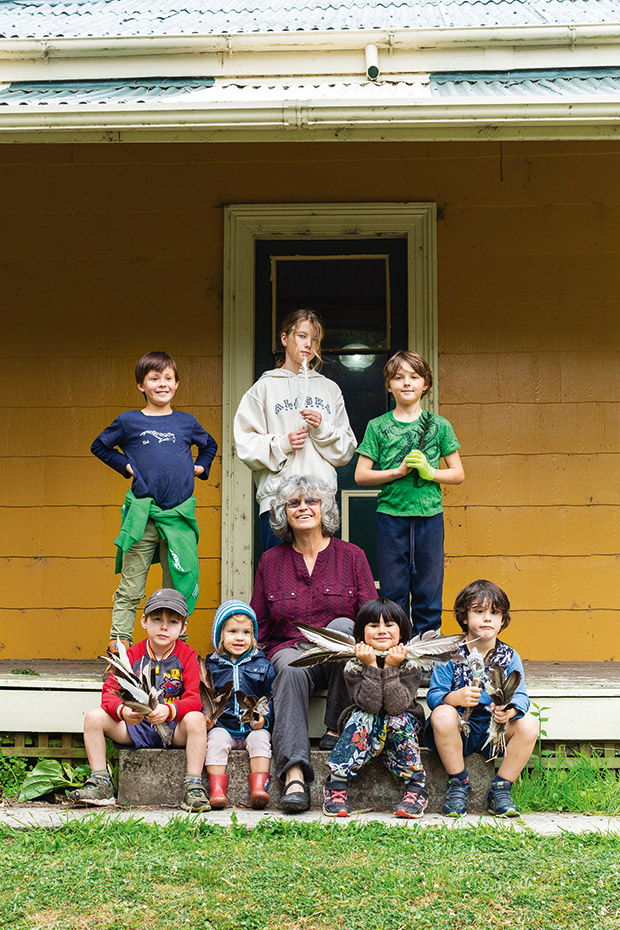
Shireen surrounded by four grandchildren and the children of her Pohatu team, who are also part of the family. They have been gathering goose feathers from around the property. (Clockwise from top left) Louis Cataliotti, Hannah and Isaac Colvin, Manu Cataliotti, Nest Parthonnaud, and Leonie and Raphael Guillemot-Peacock.
“Who would put up with this?” she asks, shaking her head and laughing. Her kitchen periodically reeks of thawed fish, chopped for the orphaned or sick birds staying in an infirmary beside the house. It’s Shireen who feeds the extra human mouths, too – visiting scientists, shearers, conservation volunteers, tour groups – as well as resident chooks and pet sheep.
And yet, despite the mess and the smell, the time, cost and work involved, this couple has been fighting to save their flippered avian neighbours for more than four decades.
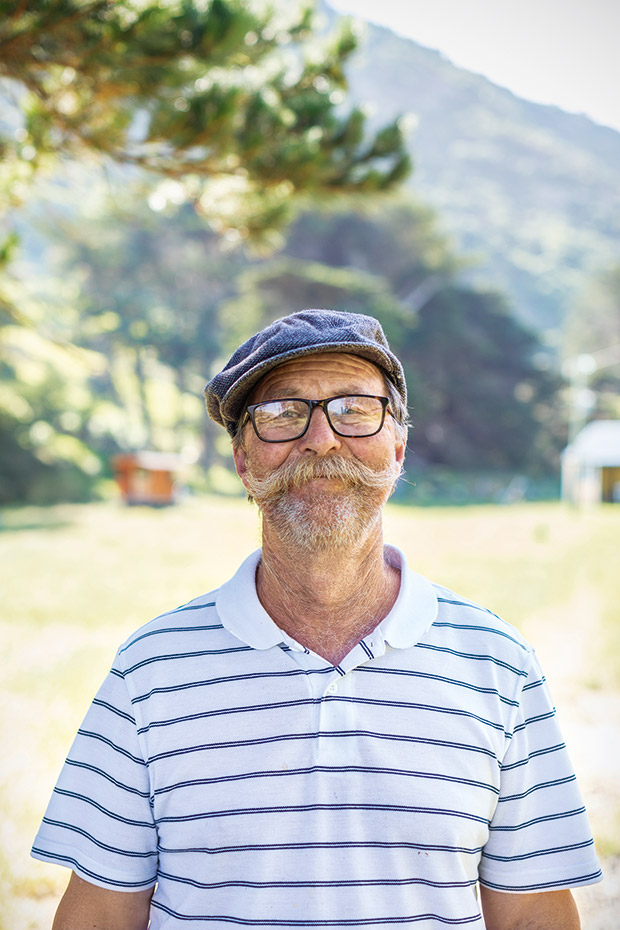
Francis Helps.
In addition to supporting a now-thriving penguin colony of 1250 pairs and running a 550-hectare farm, they host van-loads of visiting tourists as well as walkers on the busy Banks Peninsula Track, which has seen more than 35,000 trampers file through their property since 1989.
There is rarely a moment to pick weeds or tidy the house and finishing a cup of tea is an achievement. “We’re trying to retire, but we are lucky if we get a week off a year.”
Francis Helps didn’t realize he was a conservationist when he and his younger brother, Steven, acquired a 100 per cent mortgage to buy a neglected property on Banks Peninsula’s steeply sloping south-eastern coast five decades ago. The brothers, then aged 21 and 19, were raised on a nearby sheep and beef farm and they arrived in the bay prepared to clear gorse and live frugally to make something of the place.
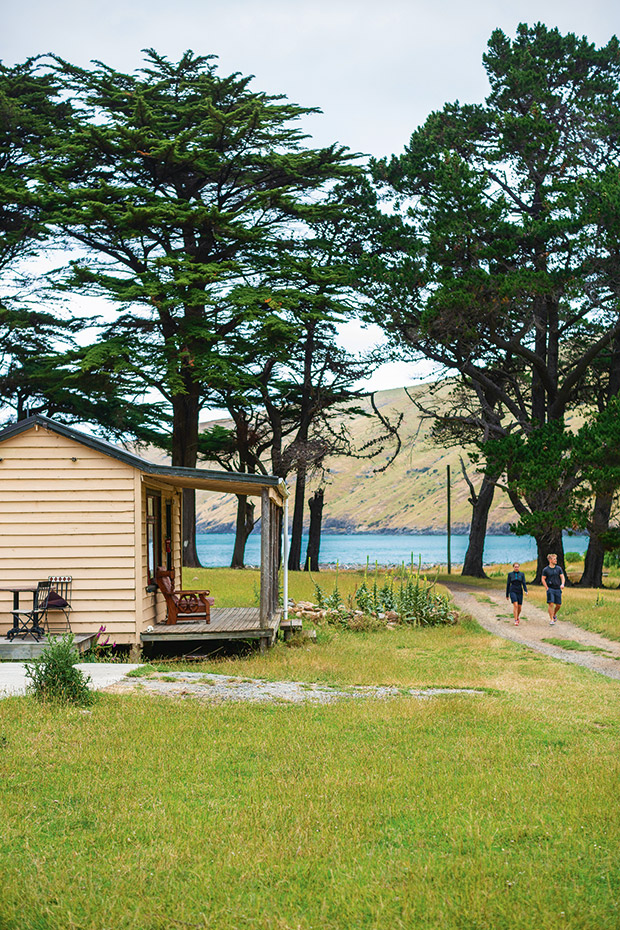
Visitors stroll up from Flea Bay towards Penguin Cottage, one of a handful of converted farm buildings on the Helps property where guests can stay overnight after their nocturnal penguin tour.
They were not, however, expecting to live in a penguin colony. Francis’ first night in the farmhouse in winter 1969 was a sleepless one courtesy of the nesting birds growling and braying around the house. He already knew a little about penguins as in his youth they’d been common on the peninsula shoreline and sometimes were even seen waddling the streets of Akaroa at dusk en route to their nests.
While the young farmer quickly became accustomed to the nocturnal din near his own house, he could not ignore the seams of native bush that ran through the property. Early on, a botanist friend taught him to appreciate the ancient red beech and kahikatea on his land, as well as mamaku tree ferns and nīkau palms growing much further south than they ought to.
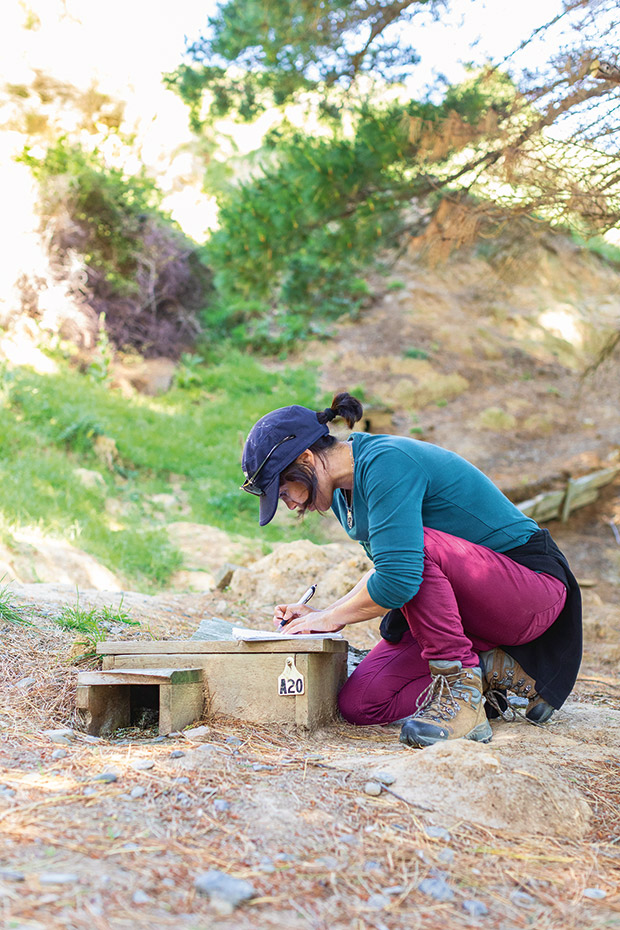
Shireen Helps’ niece Averil Parthonnaud monitors penguin nesting sites on the property. Shireen’s husband Francis says all three of his children have left the bay and returned of their own volition. “They keep coming up with new ideas,” he says. “They’re looking at doing kānuka honey now. I just let them have a go. They’re the ones who will decide the future of this place”
“We suspected we had something reasonably special in the various valleys,” Francis says. “But the stock was getting in and destroying it, and I couldn’t afford to fence it off myself. I wanted to do something about it, to protect it.”
So began a decade-long process of forming Tutakakahikura Scenic Reserve, named for a local Ngāi Tahu chief. Two more sections of regenerating native bush, waterfalls and wetland have since been safeguarded in perpetuity. Another covenant protects Flea Bay’s archaeological and historic sites; kūmara gardens and a pā site as well as remnants of the cob cottage built by European settlers.
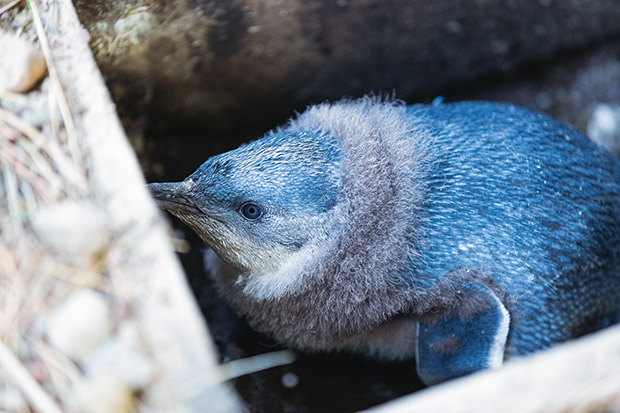
A six-week-old chick loses the last of his baby feathers as his distinctive blue plumage grows in.
Initially, though, the brothers were intent on clearing, planting, fencing and building. They bred and fattened stock, working seven days a week to eke a living from the marginal land that no one else wanted. Francis showed the same dogged determination during his three-year courtship of the dairy farmer’s daughter from around the coast.
The couple met at drama club in Akaroa, the picturesque harbour town a half-hour drive from Flea Bay via a steep, twisting gravel track. Like Francis, Shireen’s family had farmed on the peninsula for four generations. Like him, she was capable on a horse, practical, hardworking and accustomed to making do. She adored the isolated bay, though it occasionally felt claustrophobic as the sun disappeared at 2pm in winter.
“But come summer, what a paradise. It was a total falling on my feet in the place I was always supposed to be.”
- Sea-kayak tours head out onto the waters of Pohatu Marine Reserve, where visitors can spot sea birds and marine wildlife — including hector’s dolphins.
- A female fur seal and pup cohabitate happily with resident penguins. This species of seal does not eat penguins.
- On calm days, kayakers can visit sea caves within the bay.
After Francis introduced his bride to snorkeling and taught her to use a speargun; no butterfish or moki was safe. She acquired pet sheep, painted and took photographs. She gladly threw herself into farming life, despite the disapproval of her father-in-law who was adamant women should be cooking and cleaning rather than fencing.
Brother-in-law Steve and his wife Pam moved to a farm closer to town once they had children and Francis and Shireen eventually took over the Flea Bay property. Their own children, daughters Jessica and Josephine (Joey) and son Daniel grew up swimming in the bay, feeding lambs and watching their parents tend to sick penguins in the farmhouse kitchen.
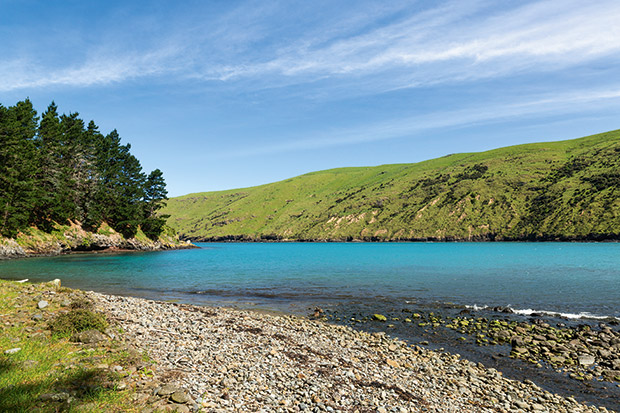
When homeschooling became too much for Shireen, she used prize money from her award-winning felted crafts to buy a station wagon for the daily school run to Akaroa. However, storms and mud sometimes made the road impassable and snow could hem them in. So Shireen and the children moved into a rental property near the primary school, returning to the farm at weekends. Then it was off to boarding school for the kids’ senior years.
By the time Daniel started school, Francis and Shireen were seriously worried. On top of crippling interest rates and drought, farming subsidies had been axed, wool prices were grim and, when they were in town, Banks Peninsula farmers crossed the street rather than face the bank manager.
The Flea Bay duo put their heads together with their neighbours and hit on the idea of hosting hikers. They’d convert sheep tracks to tramping trails, disused farm buildings to bunk-bed accommodation and market it all as a private walking route.
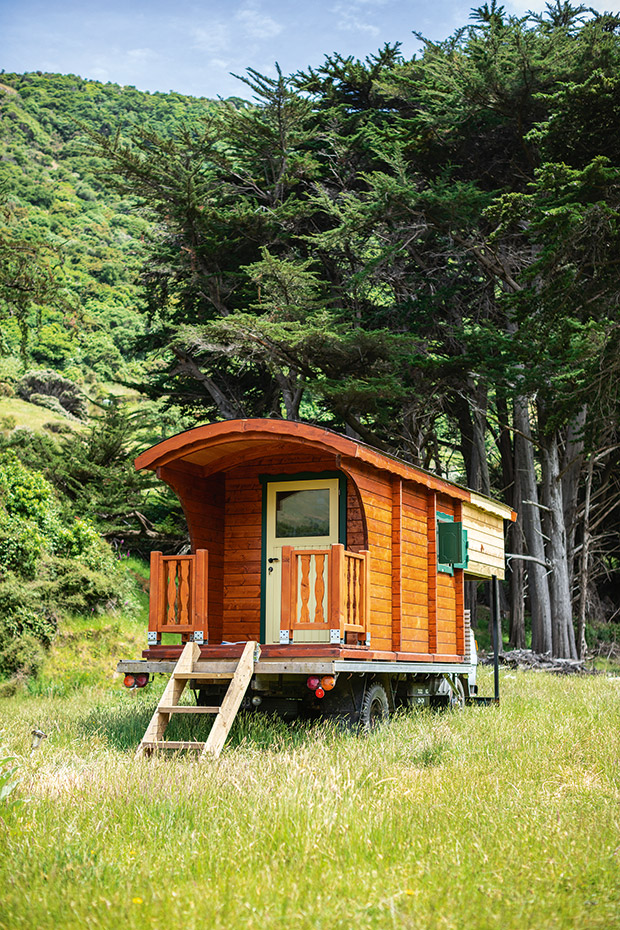
A gypsy truck is the latest addition to the Helps’ fleet of visitor accommodation. It rocks gently in the wind, and together with the sound of the adjacent babbling stream, helps guests drop off to sleep.
In December 1989, two young German backpackers blazed a trail over windswept cliff tops and through green valleys, past galumphing seals, farm animals and ocean vistas. No one else in New Zealand was offering a user-pays walking track on private land, Shireen says, and the concept proved a hit with both hikers and landowners.
“After that first year, everybody was very happy; they loved it. So, we decided to go the whole hog believing that this was going to work.”
During the week, Shireen stayed in Akaroa with the children, producing and selling her handcrafts and paintings to supplement their income. Francis would make up bunk beds, clean toilets and maintain tracks between farm chores.
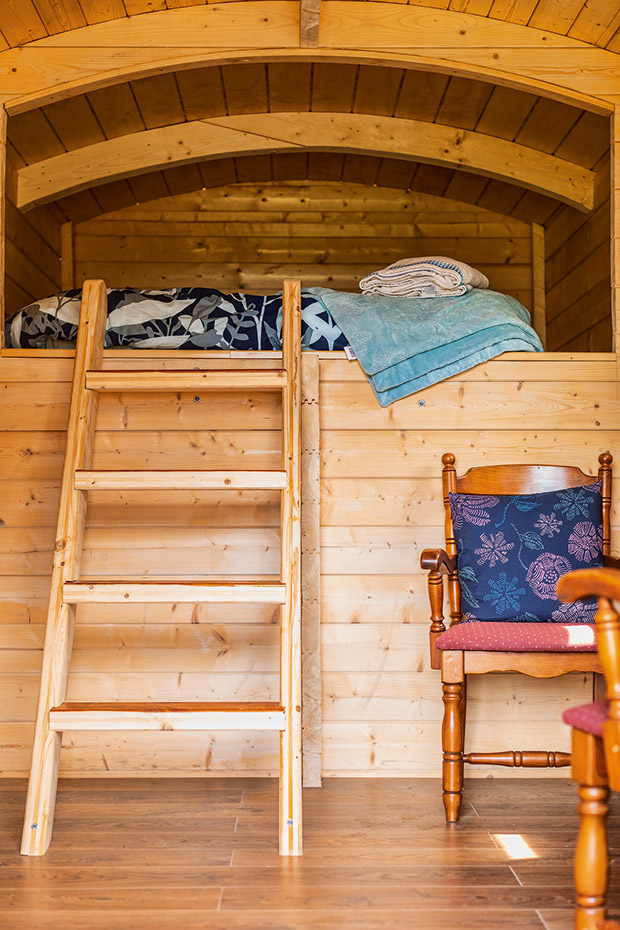
Ben and Kevin finished building the steps leading to the truck just as its first would-be occupants were walking across the paddock towards it; settlers Martha and Israel Rhodes arrived at Flea Bay in 1843 as farm labourers. But Israel quietly bought up surrounding blocks of land until he had “grid-ironed” his boss — cut off access to the property which he then bought himself. Shireen and Francis live in the house built by Martha and Israel’s son.
By then, the couple had realized it wasn’t just the land-based inhabitants of the peninsula who faced challenges. So, too, did their flippered neighbours.
“Francis and I were brought up on the Banks Peninsula, so we were used to seeing penguins in every bay, but we went back to our old haunts and there were no penguins. We started seeing dead penguins everywhere. We were also battling with recreational fishers who set nets across the penguin runs overnight. One morning we found over 20 dead penguins.”
When farmer Mark Armstrong began shooting and catching predators next door, the Helps decided to follow suit and bought traps to deal with the stoats and ferrets that attacked eggs and birds.
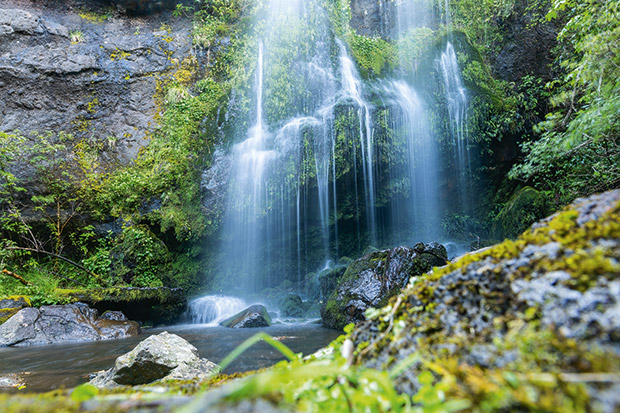
Banks Track walkers like to venture behind the curtain waterfall or take a shower in it as they hike from Onuku to Pohatu.
“Everybody was so hard up in those days, but we justified the spending on traps by thinking that some people buy cigarettes and alcohol and we didn’t. We thought, ‘Surely we can put a bit of money aside?’ The kids probably missed out a bit because we were buying traps.”
Humans were a problem, too. As word of the growing colony spread, increasing numbers of curious visitors were unintentionally frightening the penguins and causing nesting failures. Shireen hit on the idea of running viewing tours, thus limiting the numbers accessing the birds’ habitat, educating people about them and generating funding to help house, protect and monitor the birds.
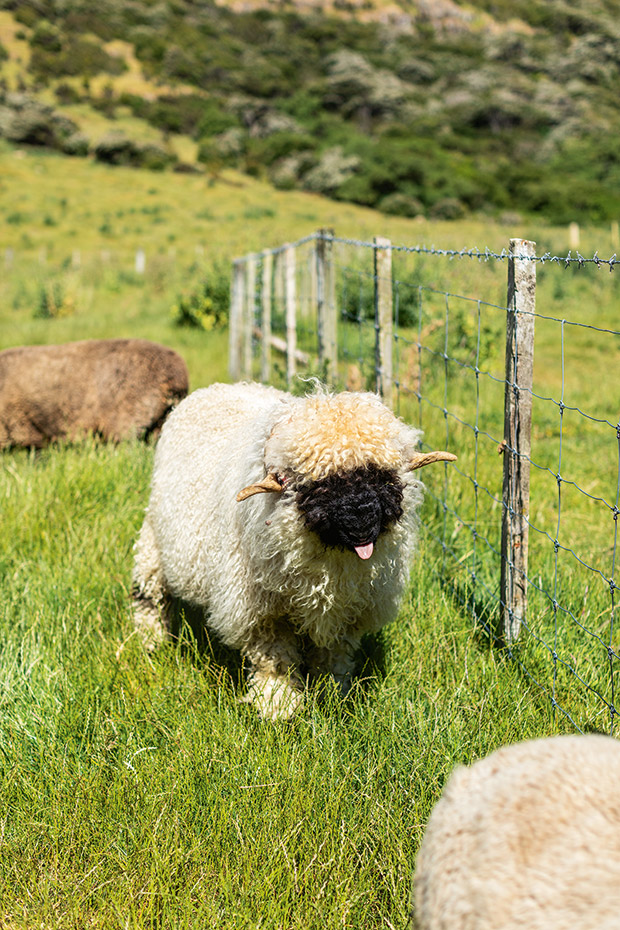
Bobby, the Swiss-bred valais blacknose ram, is a pet bought to breed. “But he’s useless,” Shireen claims, as she scratches his fleecy back affectionately. Valais have been dubbed the “cutest sheep in the world”.
Two decades later, Pohatu Penguins runs kayaking, nature walking safaris and evening penguin tours and provides accommodation. Jessica and Joey and their cousin Averil help with guiding, room cleaning and penguin monitoring, while Averil’s French-born husband Kevin manages the tour business.
Wine tours are now on offer, too, thanks to Joey’s husband, another Frenchman, Renan Cataliotti, who runs French Peak Wines on the shores of Akaroa Harbour. Daniel looks after the property’s 20 cattle and 1200 sheep, with a little help from his father, who also leads evening penguin tours. The farming operation sprawls over rugged hill country between their bush blocks, and it can take a week to muster “woollies” for shearing.
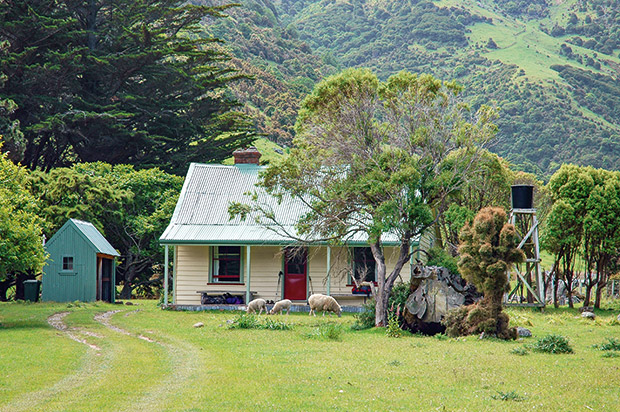
Sheep graze around Flea Bay Cottage.
“The tourism trade freed us up to protect more areas of our farm,” says Shireen. “Because we didn’t have to rely on farming income only, we could afford to close more of the farm. And tourists pay for all the conservation work we do. So it doesn’t come out of our pocket anymore.”
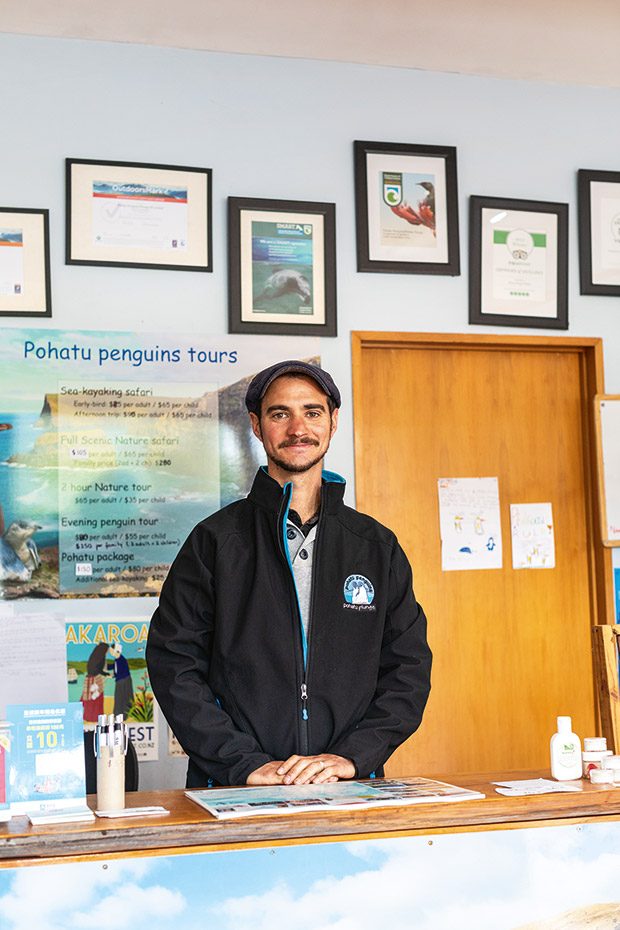
When Pohatu Penguins manager and guide Kevin Parthonnaud arrived from France in search of farm work, Shireen guessed what would happen. Sure enough, he wound up marrying her niece Averil.
Still, the work doesn’t stop. Although Shireen’s back has “had it”, most days see her hauling 10-litre bucketloads of water from a stream to douse the native trees and ferns she propagated to create a lowland forest near the house.
“I won’t see it in its glory in my lifetime,” she says. “But hopefully the grandchildren will.”
PENGUIN FACTS
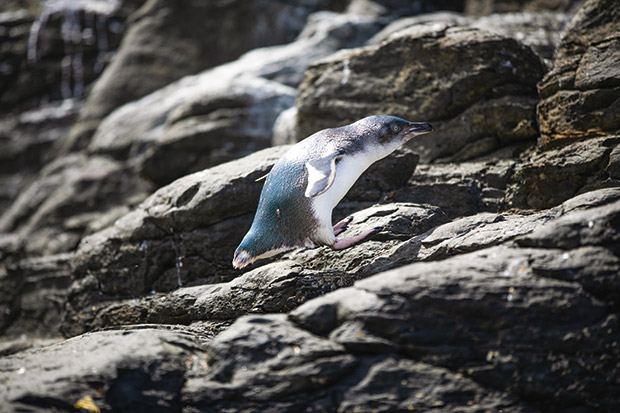
A white-flippered penguin returns home after a day’s fishing.
● Kororā (little penguins) are the smallest of their species in the world.
● More than 2500 penguins currently nest on Helps land and many of them take an hour to reach remote burrows that can lie 700 metres inland.
● The white-flippered variation found at Flea Bay is endangered and is, according to Francis, “an opportunistic, bad-tempered little bird. They’re bullies; they’ll wreck each other’s nests if they’re too close. They’re not monogamous — there’s an annual divorce rate of 20 per cent. They’ll nest anywhere that’s cool, safe and dark. We have 15 pairs under the woolshed.”
● Francis’ curiosity and his 15-year breeding and biology study — published in the Journal of Ecology in 2011 — is proof he knows their quirks and habits. “With little penguins,
you don’t stuff around with their habitat, you remove the predators, and they’ll thrive.
“But fishing is a problem. Bird diseases are a problem. Uncontrolled tourism is a problem if there’s not a grumpy old farmer or agency patrolling it. Everybody wants to get a selfie with a penguin.”
● The Flea Bay birds come ashore to nest in daylight, even though they should be nocturnal. So, visitors are kitted out in camouflage gear to avoid disturbing them.
● Predators include ferrets, stoats, hedgehogs, cats and giant petrels.
● Rescued birds that are too disabled to survive in the wild are often housed at the International Antarctic Centre in Christchurch.
WHAT THE HELPS DID
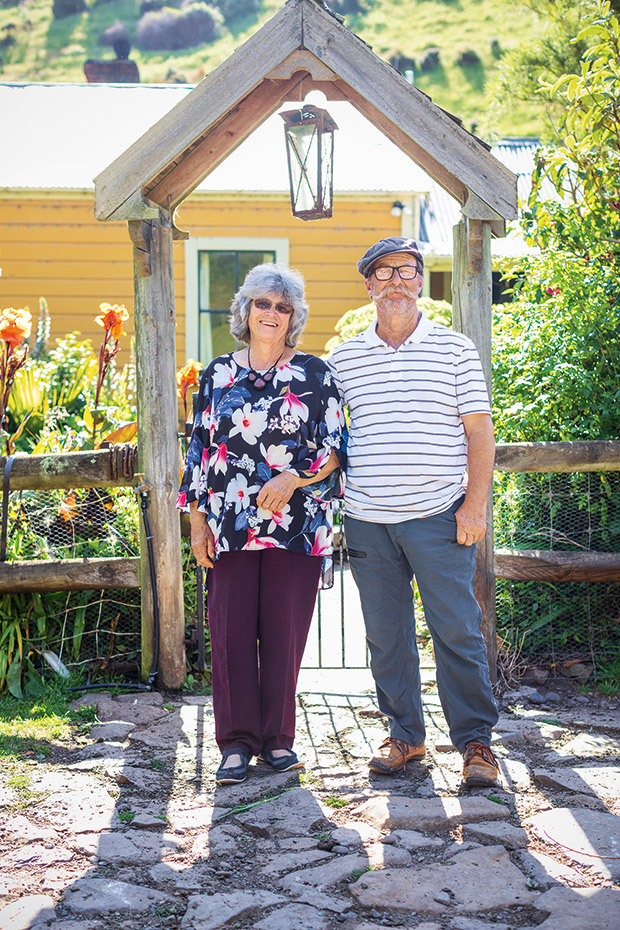
Shireen and Francis at the garden gate Francis built. They try to get off the property once a year. “We go to a rat-infested hut somewhere in the high country. Frances will hunt deer or pigs, and I take heaps of photos and sketch and paint the spectacular vistas,” says Shireen.
In the 40 years that the Helps family have worked to save Flea Bay’s little-penguin colony from extinction, they have trapped close to 10,000 predators and installed approximately 500 penguin houses. Flea Bay is now home to the largest little-penguin population on mainland New Zealand.
The Helps also monitor lizards and wētās on their land and have set aside 40 per cent of the farm as original or regenerating native bush, including an 11-hectare strip of waterfalls, ferns and red beech forest gifted to the Crown decades ago.
The couple also successfully fought for the creation of Pohatu Marine Reserve in the waters that lap their property’s edge.
SOMETHING FROM NOTHING
Once her children were at boarding school, Shireen spent five years creating a cottage in the bush. She was inspired by English couple Israel and Martha Rhodes, who came to Flea Bay in 1843 to break in and manage the land.
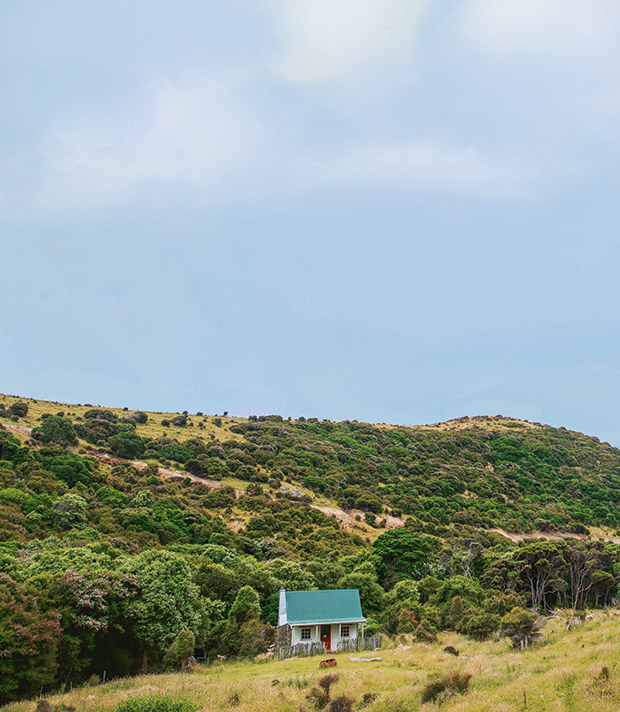
Rhodes Cottage was designed and primarily built by Shireen, though her son Daniel helped lift some of the larger rocks in place for the stone wall and chimney. It stands alongside Mabel Hope Reserve, a native reforestation project.
The pioneers eventually bought the property, and their son built the house in which the Helps live today. “I wanted to experience what it was like for Israel and Martha to come here and build something out of nothing. And without any skill. They weren’t trained; they just had to nut it out.
“When I was a kid, I was into building treehouses; I’m from a farm, where there’s always something to build. I worked on the cottage every day, spending about a year and a half making clay blocks.”
Shireen tackled everything — from the stonework to the ring foundations and lintels. These days, the abode she dubbed Rhodes Cottage is used to accommodate friends and family. It survived the Canterbury earthquakes intact, while neighbouring homes were severely damaged. An ancient shed on the property is also used for shearing sheep.
PAYING ITS WAY
Diversifying into tourism has paid off for the Helps family. These days, combined profits from their Banks Track and Pohatu Penguins enterprises are roughly on a par with the farming side of the business.
“That’s when all the costs are taken into account,” Shireen says. “Otherwise, tourism earnings would outstrip farming.”
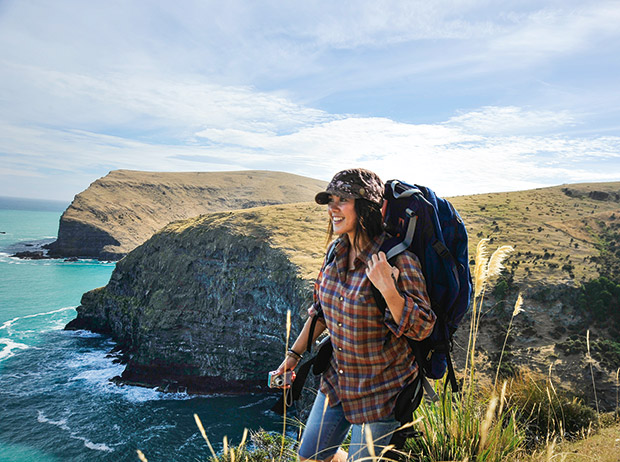
Averil checks a section of the track.
On busy summer days, 10 van-loads of tourists traverse the dusty road from Akaroa to Flea Bay for a Pohatu tour. Most are day-trippers — travelers or cruise-ship passengers — but up to a dozen can stay overnight in converted farm buildings, a purpose-built tree house or a gypsy-style truck. As many as 12 more can arrive on foot, with a Banks Track booking.
Shireen estimates at least $12,000 a year is spent on conservation-related costs, although this figure excludes all the hours of volunteered time or the materials the Helps and others donate. It also doesn’t include the cost of paying guides to host school or conservation groups that visit free of charge. pohatu.co.nz
Love this story? Subscribe now!
 This article first appeared in NZ Life & Leisure Magazine.
This article first appeared in NZ Life & Leisure Magazine.
